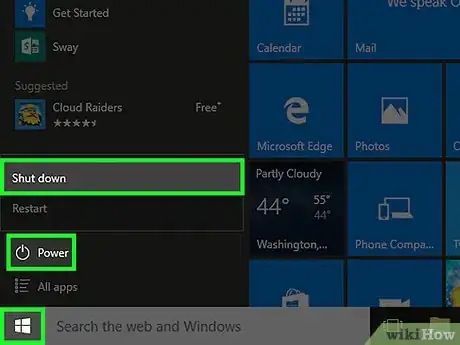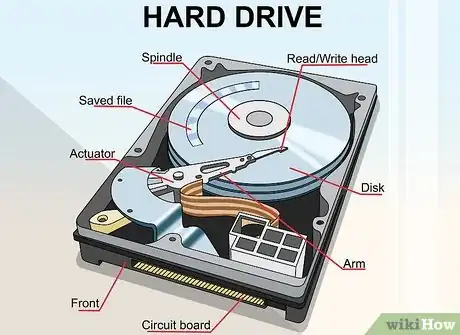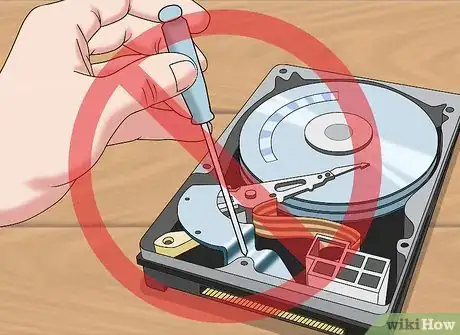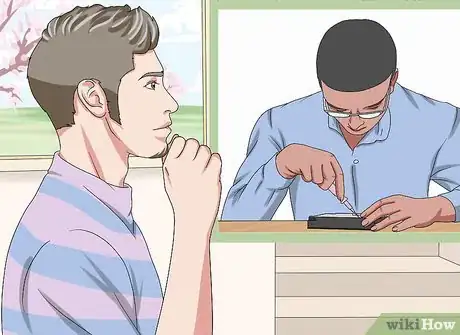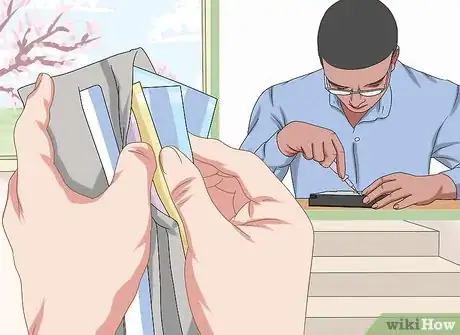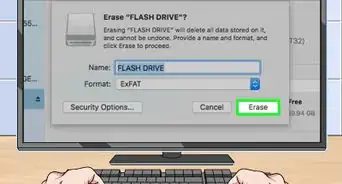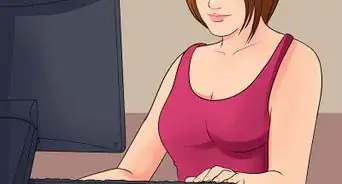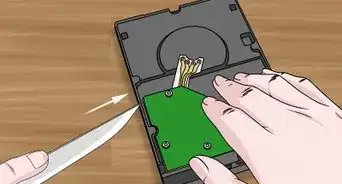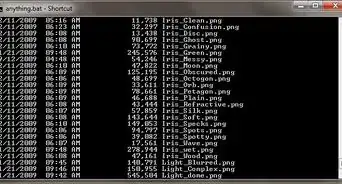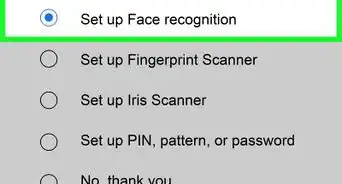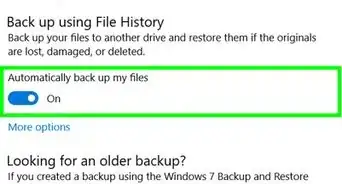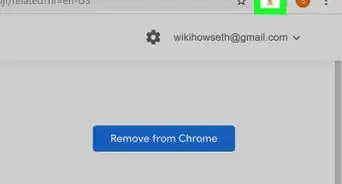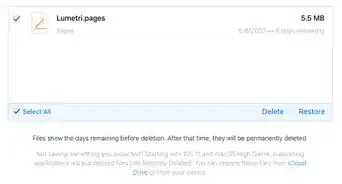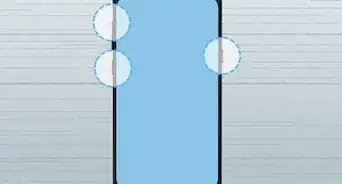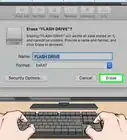This article was co-authored by wikiHow staff writer, Jack Lloyd. Jack Lloyd is a Technology Writer and Editor for wikiHow. He has over two years of experience writing and editing technology-related articles. He is technology enthusiast and an English teacher.
This article has been viewed 3,560,733 times.
Learn more...
This wikiHow teaches you how diagnose and potentially recover a dead or dying hard drive (also known as a hard disk). Keep in mind that following these instructions does not guarantee that you'll be able to recover your hard drive. Additionally, while opting for professional help is your best option, doing so will likely be expensive.
Steps
Basic Troubleshooting
-
1Stop using your computer immediately. If your hard drive is still spinning but you're encountering performance issues, it's best to stop the hard drive from running as soon as possible. Once you've turned off your computer, don't turn it on again until you can take it to a professional repair service.
- If you're worried about an external hard drive malfunctioning, you can simply unplug it from your computer.
-
2Try plugging your hard drive into a different port or computer. If you can get your hard drive to work on a computer other than the one in which it currently resides, the problem isn't necessarily with the hard drive itself--it's with the cables or the ports on your computer.
- If you're using an external hard drive, this is as easy as unplugging it from your computer and plugging it into a different one. You'll also want to try a replacement cable in case the old one is malfunctioning.
- Internal hard drives present a more complicated problem. In order to diagnose your internal hard drive's connection health, you'll first need to remove the drive from your computer. After doing so, you can buy a hard drive docking station or a USB cable converter (Amazon sells both) that allows you to connect your external hard drive to another computer.
- Before removing a hard drive, make sure your computer is unplugged and the battery is disconnected (if applicable).
- Removing a hard drive is an incredibly difficult task on a Mac. If you intend to do so anyway, proceed with caution.
- In rare cases, a hard drive failing to work on your specific computer (but working on others) can be symptomatic of a failing motherboard. If you can get your hard drive running on any computer other than your own, you should take your computer into a tech company somewhere to get it checked out.
Advertisement -
3Know the different components of a hard drive. Hard drives have three distinct components that are likely to cause a drive failure if they malfunction:[1]
- PCB - The circuit board (usually on the bottom of your hard drive) controls most of your hard drive's functions, as well as translating hard drive information into readable information. Circuit boards are typically green.
- Platters - Thin disks that store data. Platters are responsible for most of the noise you hear when your hard drive starts up. Unless you're a professional with access to a clean room and the necessary equipment, you won't be able to fix your hard drive's platters on your own.
- Head Assembly - The head assembly is what reads the data off of the platters. Again, you won't be able to repair the head assembly without professional-grade experience and equipment.
-
4Assess the sounds your drive was making. Depending on what's wrong with it, your hard drive will make certain sounds. Be sure to cross-reference your hard drive's model with the sound it's making to ensure an accurate diagnosis.
- For example: if your hard drive was making a clicking noise, it most likely has a problem with the head assembly.[2]
- Unfortunately, most problems that are diagnosable by the sound they cause will need professional care.
-
5Refrain from using do-it-yourself quick fixes. These include things like freezing your hard drive or applying force to it. While some users may report success from these methods, performing a short-term fix on your hard drive is bound to make successful data recovery from a professional service even less likely than it already was.
- Even if you can get a quick fix to work, the effects are usually short-term. Your hard drive will still end up dying.[3]
Consulting a Repair Company
-
1Understand that hard drive recovery is a job for professionals. Due to the incredibly complex construction of a hard drive, you won't be able to fix your own drive to the point of being able to retrieve the data stored on it unless you have an advanced background in electronics. For this reason, you should hand your hard drive over to a professional repair service.
- Attempting to fix a dead hard drive will only lessen the chances of a professional being able to repair it.
- Even replacing the PCB board is an advanced exercise that requires knowledge of how to solder circuitry and purchase exact part replacements.
-
2Expect to pay a lot of money for the repair. True hard drive recovery entails the use of clean rooms, specialized equipment, and highly trained personnel. As such, you'll likely spend over a thousand dollars getting your hard drive's information back.[4]
-
3Find the repair company that best suits your needs. You can usually find drive recovery services through your local tech outlet, but a couple of outstanding options include the following:[5]
- Best Buy - Best Buy's "Geek Squad" branch handles data recovery. You can expect to pay anywhere from $200 to a little under $1500, depending on the severity of the hard drive's damage.[6]
- Drive Savers - Drive Savers is a 24/7 customer service-based data recovery company with 30 years of experience. In addition to computer hard disk recovery, they can also recover smart phone and camera hard drives.
-
4Pick a company and stick with it. Each time someone opens your hard drive and tries to fix it, the probability of it actually getting fixed decreases. This is because opening your hard drive renders it susceptible to things like dust, static electricity, and other environmental hazards. To minimize the risk, you should avoid asking for multiple consultations from different companies. To be sure of the company's competence, inquire what kinds of data recovery tools they use. If they use PC3K or DeepSpar, that is a good sign.
Community Q&A
-
QuestionHow do I recover my data from a laptop when the laptop is dead and the hard drive isn't working?
 Community AnswerIf the laptop is dead do to a problem other than the hard drive you need to pull the hard drive and you can access it with another computer. If the hard drive on the laptop is dead, you can't recover it unless you are willing to send it to a professional which is likely to cost around 1000 dollars.
Community AnswerIf the laptop is dead do to a problem other than the hard drive you need to pull the hard drive and you can access it with another computer. If the hard drive on the laptop is dead, you can't recover it unless you are willing to send it to a professional which is likely to cost around 1000 dollars. -
QuestionWhat does it meant if when I plug in my hard disk, it shows light on it, but it didn't show on my computer?
 Community AnswerThe light means there is power to the hard drive. It may not be working at all. A partition editor can tell you if your operating system can do anything with the drive or not. If not, shut off and unplug the computer until you can remove the hard drive, so you can take it to a pro.
Community AnswerThe light means there is power to the hard drive. It may not be working at all. A partition editor can tell you if your operating system can do anything with the drive or not. If not, shut off and unplug the computer until you can remove the hard drive, so you can take it to a pro. -
QuestionWhat is an image burner?
 Community AnswerAn image burner is a program or software that burns iso/data (raw file) onto CDs and DVDs.
Community AnswerAn image burner is a program or software that burns iso/data (raw file) onto CDs and DVDs.
Warnings
- Removing your internal hard drive will void its warranty.⧼thumbs_response⧽
- Attempting to fix any moving parts of a hard drive by yourself will more than likely result in loss of data.⧼thumbs_response⧽
References
- ↑ http://lifehacker.com/5982339/diy-data-recovery-tricks-for-when-your-hard-drive-goes-belly-up
- ↑ http://www.datacent.com/hard_drive_sounds.php
- ↑ http://www.makeuseof.com/tag/recover-lost-data-free-pandora-recovery-windows/
- ↑ http://lifehacker.com/5951822/how-can-i-recover-data-from-a-dead-or-erased-hard-drive
- ↑ http://lifehacker.com/5951822/how-can-i-recover-data-from-a-dead-or-erased-hard-drive
- ↑ http://www.bestbuy.com/site/geek-squad/geek-squad-data-recovery/pcmcat748300502324.c?id=pcmcat748300502324
About This Article
1. Shut down the computer.
2. Try using the drive in a different computer.
3. Assess the sounds the drive is making.
4. Avoid DIY repairs.
5. Contact a repair company.
